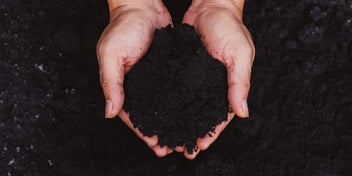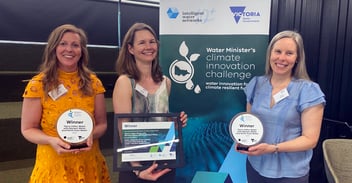Capturing carbon dioxide in water
Scientists at the Queensland University of Technology have developed a novel approach to carbon capture, using water and an electromagnetic process to store carbon dioxide in carbonates, which could be used to produce building materials.
PhD researcher Olawale Oloye and Professor Anthony O’Mullane developed the process, which captures carbon dioxide through a reaction with an alkaline solution, which is then combined to produce carbonate products.
Perhaps the most promising application of the technology is using it to produce calcium carbonate (CaCO3), a crucial component of the cement industry.
“We envision this technology would benefit emission-intensive industries such as the cement industry whose CO2 footprint is seven to 10 per cent of anthropogenic CO2 emissions due to the initial clinking [heating] step that converts CaCO3 into CaO [lime] with the emission of large amounts of CO2,” said O’Mullane.
“By coupling the mineralisation process to produce CaCO3 from the emitted CO2 during the clinking step we could create a closed loop system and reduce a significant percentage of the CO2 involved in cement production.”
To produce calcium carbonate, the process comprises dissolving carbon dioxide in water containing calcium chloride. An electrochemical process is then applied to make the solution very alkaline at one electrode. The calcium chloride then reacts with the solution and produces calcium carbonate, which is a solid.
O’Mullane explained that the process also produced hydrogen, an additional benefit.
“The hydrogen evolution reaction during electrolysis ensured that the electrode was continually renewed to keep the electrochemical reaction going while also generating another valuable product, green hydrogen.”
Taking into account the value of potable water, the research team also established that seawater can be used for the process, reducing the burden on local water resources.
O’Mullane said the process has a number of potential applications.
“This mineralisation approach could be used to produce other commercially important metal carbonates such as strontium carbonate and manganese carbonate, both of which have many industrial uses.”
The research was published in the journal ChemSusChem.



